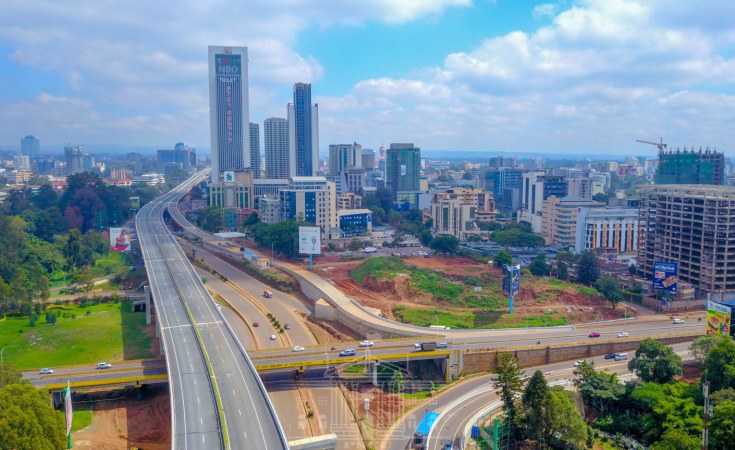A trip to Kenya's capital Nairobi is often associated with unproductive time spent in the city's tortuous traffic. It is to be expected in a city with over 5 million inhabitants, with a rapidly growing population expected to reach 7 million by 2030.
Prior to the new expressway, it was the norm that a 26 kilometre trip from the airport to the suburb of Gigiri would take anything from two hours to three hours. As I settled into my cab during a trip to Nairobi in June 2022, I had no expectation of being spared the same tortuous experience. As we drove out of the airport, the driver suddenly took a slight left to join what seemed to be a new road. At that moment I remembered having browsed through an article about an expressway that had recently been opened, moving from Jomo Kenyatta International Airport towards the city centre and slightly beyond.
A trip that ordinarily would have taken two hours or more was reduced to no more than 40 minutes.
Despite my initial positive sentiments about the shortened journey, I made a number of observations. The first was the limited number of cars on the expressway. I also noticed the traffic congestion in the old road from the airport, which runs parallel to the new expressway. The old road was overflowing with taxis and buses transporting workers, scooters (called boda boda) and plain-looking, ageing cars. By contrast, the free-flowing expressway was mainly used by fancier cars. Over the course of the next week, I was intrigued by the dynamics of this expressway and made it a point to try and develop a sufficient understanding of its politics and economics.
The expressway, built by the China Road and Bridge Cooperation, stretches over 27.1 kilometres. Reports indicate that the initial cost of the project was estimated at $559 million but increased to roughly $750 million at the time of completion in May 2022. Moja Expressway, a subsidiary of CCCC, will operate the road for 27 years to recoup its investment through toll fees. Prior to the official opening, government officials maintained that toll fees would be affordable to the average Nairobi citizen.
Motorists were expected to pay between Sh100 and Sh1,550 in toll charges, depending on the size of the vehicle and the distance covered. The charges will be dollar-based to cushion the Chinese operator from exchange rate losses.
However, the weakening of the local currency against the dollar will negatively impact the local road user.
By June 2018, the government had raised the fees by 16 per cent to reflect foreign exchange changes for the dollar-denominated charges following the weakening of the Kenyan Shilling. The toll rates are set for future adjustments based on the prevailing exchange rate and changes in the consumer price index.
This was even before the road had opened for public use.
Local road users will continue to face traffic congestion as they will not be able to fork out the cost for each one-way trip. If the project is unable to realise the anticipated transition from the old road to the new freeway, this may necessitate one of two options: the use of public resources to complement the underperforming revenue streams (this is if the government wants to maintain the 27-year operating agreement with CRBC) or to extend the term. Both options, in particular using public resources to fund underperforming revenue streams, work against the ordinary Kenyan road user. They will effectively be paying to solve the problems of the local and international elite who can afford to make use of the new expressway.
The dynamics of the Nairobi Expressway are not unique to Kenya. To a large extent, they reflect the main tensions of building inclusive cities through infrastructure development, sustainable financing models and global partnerships that work for African citizens.
My sincere hope is that African leaders and investors will seriously address the shortcomings of existing infrastructure development models, as exemplified by the Nairobi case study, when they gather in Senegal 1 to 3 February for the Dakar Financing Summit. In many ways, this event is more essential to the continent's development objectives than the recent World Economic Forum held in Davos. For one thing, the Dakar meeting forms part of a home-grown African Union-driven process to create a blueprint for infrastructure development in Africa - without which sustainable, inclusive growth is a non-starter.
The lessons from Nairobi, and many others, are ones we have learnt far too often - and can ill afford.
Dr Msingathi Sipuka is the Chief of Staff at the African Union Development Agency-NEPAD


